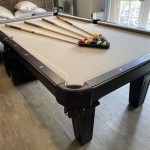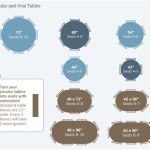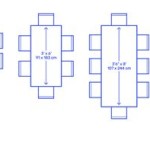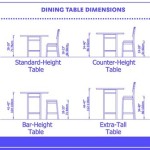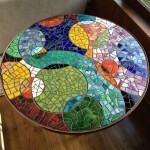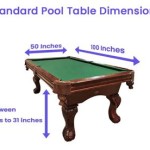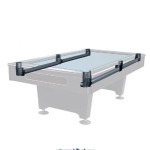Expandable Dining Tables: Maximizing Space in Compact Homes
In the realm of interior design, particularly for urban dwellers and those residing in smaller homes or apartments, efficient use of space is paramount. One furniture piece that frequently presents a challenge in such environments is the dining table. Traditional dining tables, designed for larger gatherings, often occupy a considerable footprint, leaving limited room for other essential furnishings or activities. Expandable dining tables offer a compelling solution to this spatial dilemma, providing the flexibility of a compact surface for everyday use that can be swiftly transformed to accommodate guests when needed.
Expandable dining tables are designed with mechanisms that allow them to increase in size, typically through the addition of leaves or extensions that are either stored within the table itself or stored separately. This adaptability makes them an ideal choice for individuals or families who value both functionality and the ability to entertain without sacrificing valuable living space. The market offers a wide variety of designs, materials, and expansion mechanisms, ensuring that consumers can find a table that perfectly complements their aesthetic preferences and spatial requirements.
Choosing the right expandable dining table requires careful consideration of various factors, including the size of the space, the number of people typically accommodated, the preferred style, and the budget. Evaluating the available options based on these criteria ensures a purchase that not only meets functional needs but also enhances the overall design of the home.
Key Point 1: Understanding the Mechanics of Expansion
Expandable dining tables employ a variety of mechanisms to achieve their adjustable size. Understanding these mechanisms is crucial for selecting a table that aligns with individual needs and preferences. The primary types of expansion mechanisms include:
Leaf Insertion: This is the most common type of expansion mechanism. Leaf insertion involves adding one or more separate leaves, typically made of the same material as the tabletop, into the center of the table. The main table splits apart, often using a sliding mechanism, to create space for the leaf or leaves. These leaves are usually stored separately but some tables have a self-storing leaf compartment beneath the tabletop. The number of leaves determines the maximum extended size of the table.
Butterfly Leaf: The butterfly leaf mechanism features a leaf that is hinged and folds out from beneath the tabletop. When not in use, the leaf is tucked away, creating a seamless and space-saving design. To expand the table, the tabletop is separated, and the butterfly leaf is unfolded and locked into place. This design is particularly convenient as it eliminates the need for separate leaf storage.
Drop Leaf: Drop leaf tables feature hinged leaves that can be raised or lowered to adjust the table's size. When the leaves are down, the table is compact and ideal for smaller spaces. When the leaves are raised and supported by brackets or legs, the table provides a larger surface area. Drop leaf tables are often used as console tables or side tables when not needed for dining.
Extension with Sliding Top: Some expandable tables use a sliding top mechanism where one or both halves of the table slide outwards, revealing a hidden leaf underneath. The hidden leaf is then lifted into place to extend the table. This mechanism offers a clean and streamlined appearance, as the leaf is integrated into the table's design.
Each of these mechanisms offers distinct advantages and disadvantages. Leaf insertion provides the greatest flexibility in terms of size adjustment, while butterfly leaves and drop leaves offer convenience and space-saving features. Sliding top mechanisms provide a seamless transition between the compact and expanded states.
Key Point 2: Materials and Styles
The choice of materials for an expandable dining table significantly impacts its durability, aesthetic appeal, and overall cost. Common materials used in the construction of these tables include:
Solid Wood: Solid wood tables are prized for their durability, beauty, and timeless appeal. Wood species such as oak, maple, walnut, and cherry are commonly used. Solid wood tables can withstand heavy use and can be refinished to restore their appearance. They are also relatively easy to repair if damaged. However, solid wood tables tend to be more expensive than those made from other materials.
Wood Veneer: Wood veneer tables consist of a thin layer of real wood adhered to a substrate such as particleboard or MDF (medium-density fiberboard). Veneer tables offer the look of solid wood at a lower cost. They are also less susceptible to warping or cracking than solid wood tables. However, veneer tables are more vulnerable to damage and cannot be refinished as extensively as solid wood tables.
Metal: Metal tables offer a modern and industrial aesthetic. Steel, aluminum, and wrought iron are commonly used. Metal tables are durable and resistant to scratches and stains. They are also relatively lightweight and easy to move. However, metal tables can be cold to the touch and may require special care to prevent rust or corrosion.
Glass: Glass-topped tables offer a sleek and contemporary look. Tempered glass is used for dining tables to ensure safety and durability. Glass tables are easy to clean and can make a small space feel larger and brighter. However, glass tables are prone to scratches and fingerprints and may require more frequent cleaning.
Laminate: Laminate tables feature a synthetic surface material that is bonded to a substrate. Laminate tables are affordable, durable, and easy to clean. They are available in a wide range of colors and patterns, including wood-grain finishes. However, laminate tables can look less luxurious than solid wood or veneer tables.
In addition to material, the style of the expandable dining table should complement the overall décor of the room. Styles range from traditional to modern, rustic to minimalist.
Traditional: Traditional dining tables often feature ornate carvings, turned legs, and rich finishes. They are typically made from solid wood and exude a sense of formality and elegance.
Modern: Modern dining tables emphasize clean lines, simple shapes, and minimalist details. They often incorporate materials such as metal, glass, and laminate.
Rustic: Rustic dining tables feature a natural and unrefined aesthetic. They are often made from reclaimed wood or distressed materials and evoke a sense of warmth and character.
Mid-Century Modern: Mid-century modern dining tables are characterized by their sleek lines, tapered legs, and use of natural materials such as wood and metal. They offer a retro-inspired aesthetic that is both stylish and functional.
Key Point 3: Practical Considerations for Small Spaces
When selecting an expandable dining table for a small space, several practical considerations are paramount to ensure functionality and convenience. These considerations include:
Size and Shape: The size of the table when both collapsed and expanded is a critical factor. Measure the available space carefully to determine the maximum dimensions the table can occupy without obstructing movement or other furniture. Rectangular tables are generally more space-efficient than round or oval tables, as they can be placed against a wall when not in use. However, round tables may be preferable for smaller gatherings or conversations.
Storage: Consider where the leaves will be stored when not in use. Tables with self-storing leaves are the most convenient option, as they eliminate the need for separate storage space. If the leaves must be stored separately, ensure that there is adequate storage space in a nearby closet or cabinet.
Ease of Expansion: The ease with which the table can be expanded or collapsed is another important factor. Choose a table with a smooth and reliable mechanism that can be operated by one person. Avoid tables with complex or cumbersome mechanisms that require significant effort to adjust.
Weight and Portability: If the table needs to be moved frequently, consider its weight and portability. Lighter tables made from materials such as metal or laminate are easier to move than heavier tables made from solid wood. Tables with casters or wheels can also be easily moved around the room.
Chair Selection: The chairs chosen to accompany the expandable dining table should also be space-conscious. Consider chairs that can be stacked or folded when not in use. Armless chairs are generally more space-efficient than chairs with arms. Benches can also be a good option, as they can be pushed under the table when not in use.
Placement: The placement of the table within the room is crucial for optimizing space. Position the table near a wall or corner to minimize its footprint. Ensure that there is adequate space around the table for chairs to be pulled out and for people to move around comfortably. Consider using a rug to define the dining area and anchor the table and chairs.
Multi-Functionality: In a small space, furniture that serves multiple purposes is highly valuable. Consider expandable dining tables that can also be used as desks or work surfaces. A table with storage drawers or shelves can provide additional storage space for dining essentials or other items.
By carefully considering these practical considerations, individuals can select an expandable dining table that maximizes space, enhances functionality, and complements the overall design of their small home.

Space Saving Transforming Tables Expand Furniture

Expandable Dining Tables To Maximize Your Space Designcafe

Expandable Dining Table For Small Spaces Why They Are So Efficient Space Kitchen Island

Expandable Dining Table For Small Spaces Why They Are So Efficient Space Saving Kitchen Foldable Chairs

41 Extendable Dining Tables To Maximize Your Space

Expandable Dining Tables To Maximize Your Space Designcafe

Extendable Tables For Small Spaces Nordic Design Furniture

Mid Century Expandable Dining Table 39 92 West Elm

Expanding Tables For Small Spaces Furniture Dining Table Space

13 Best Small Space Kitchen And Dining Tables Of 2024 Top Picks

